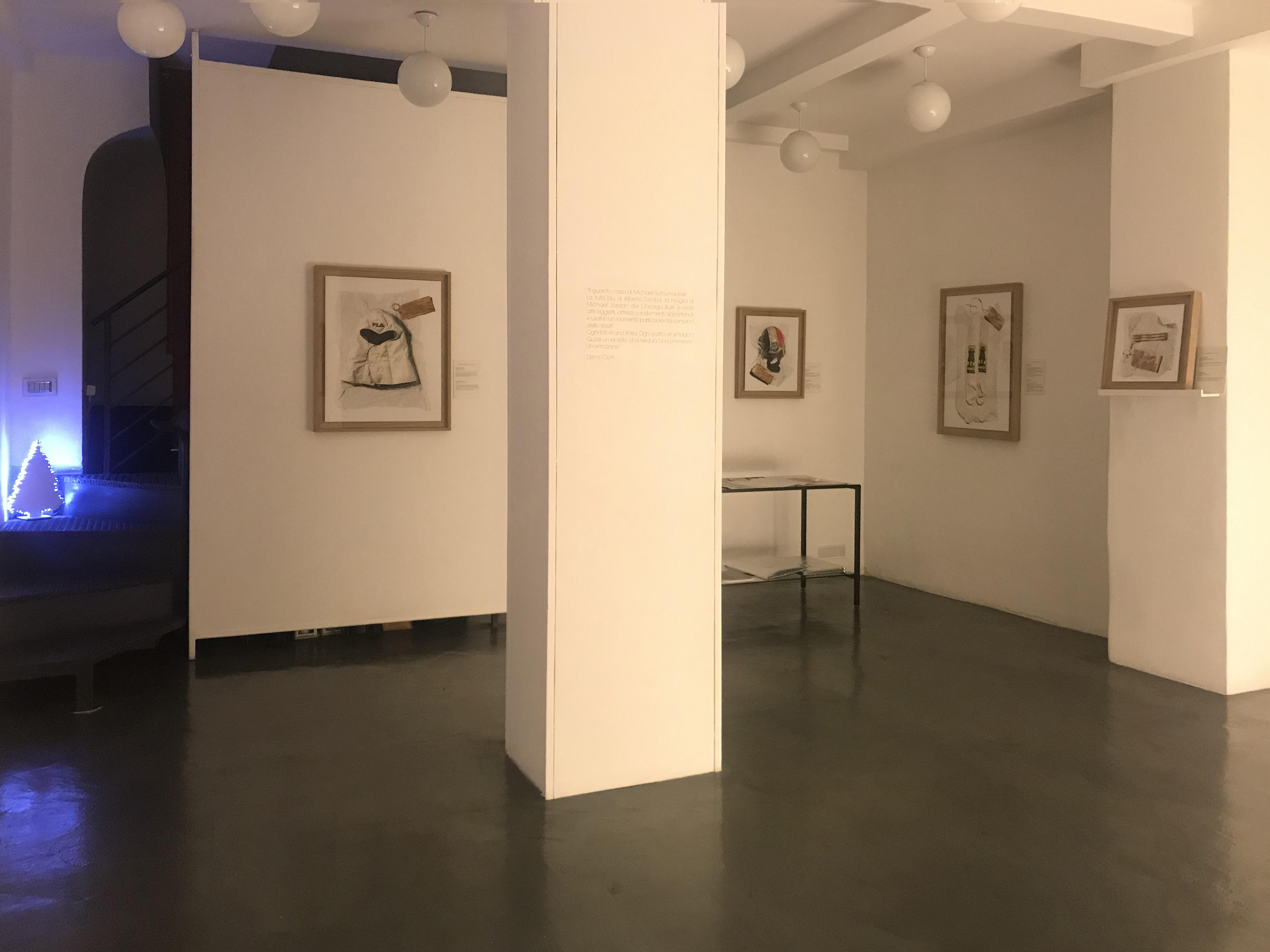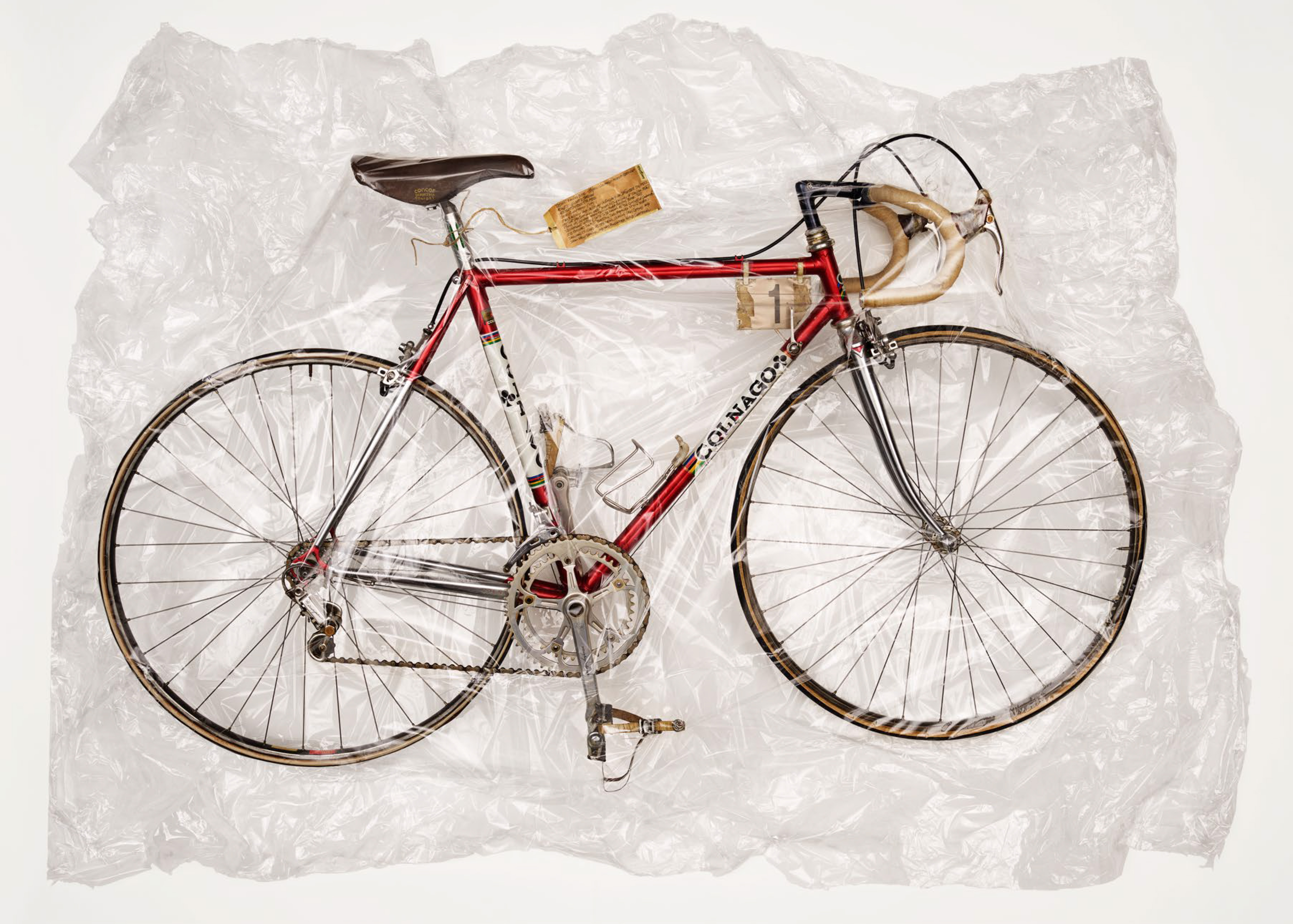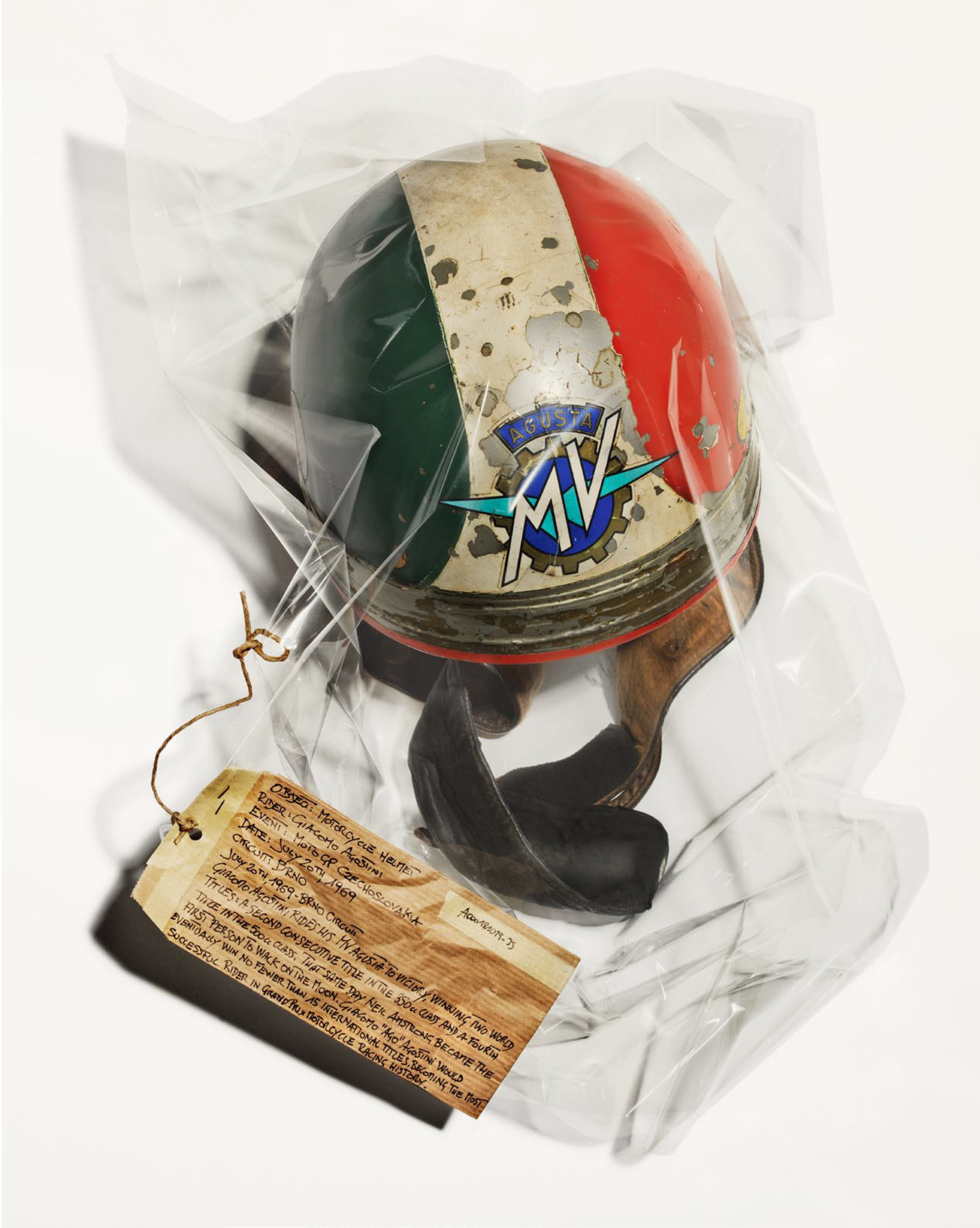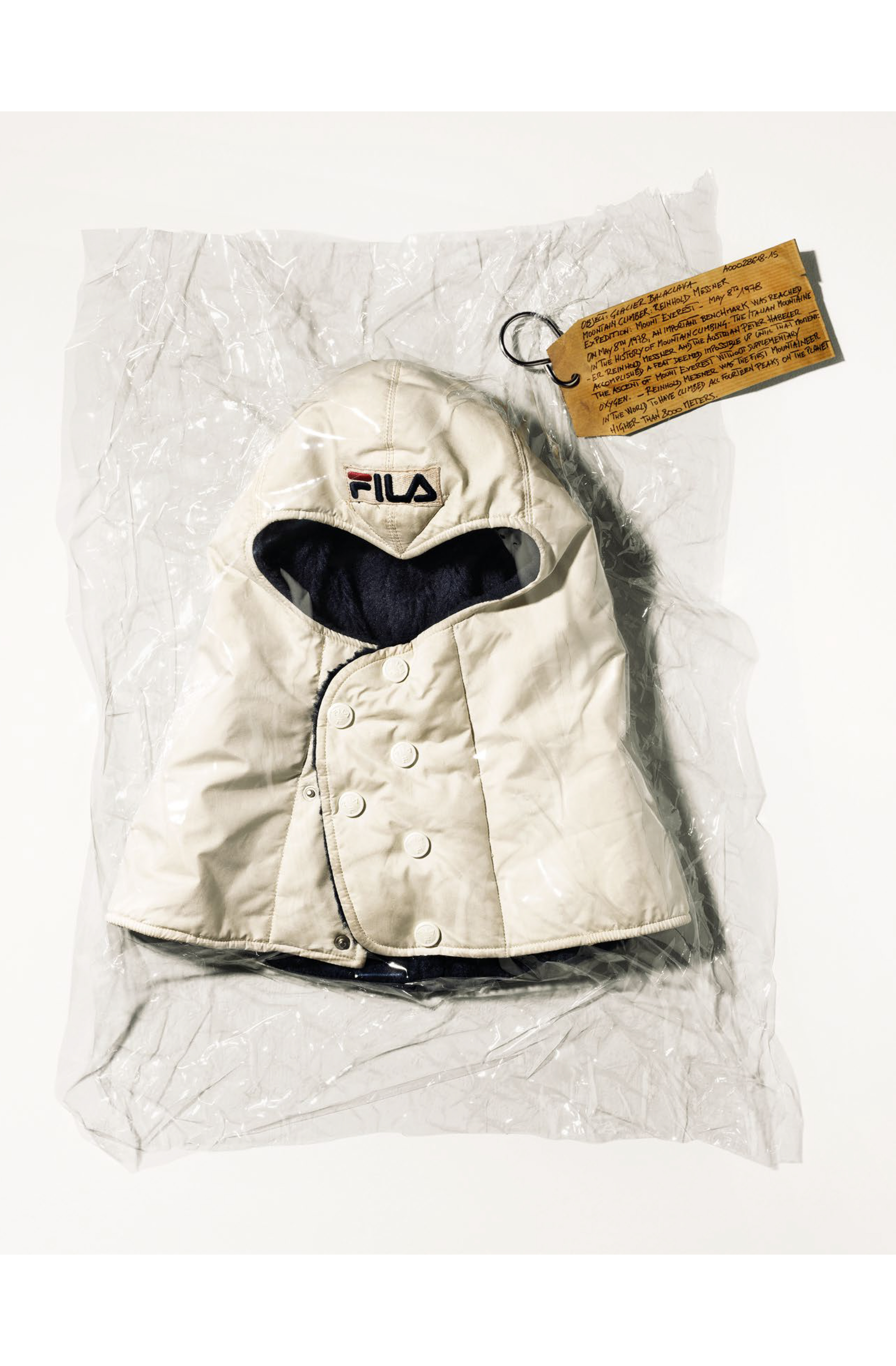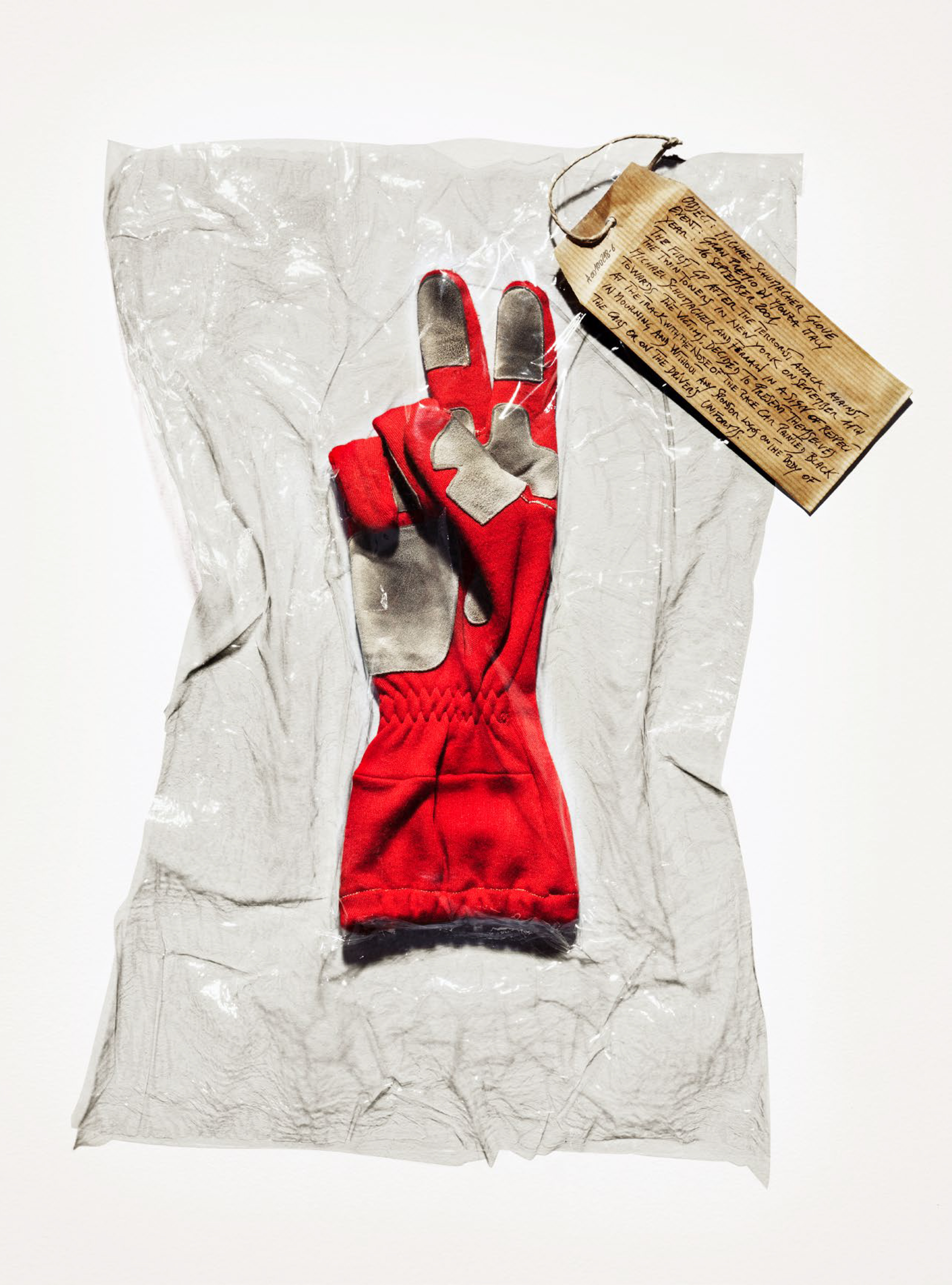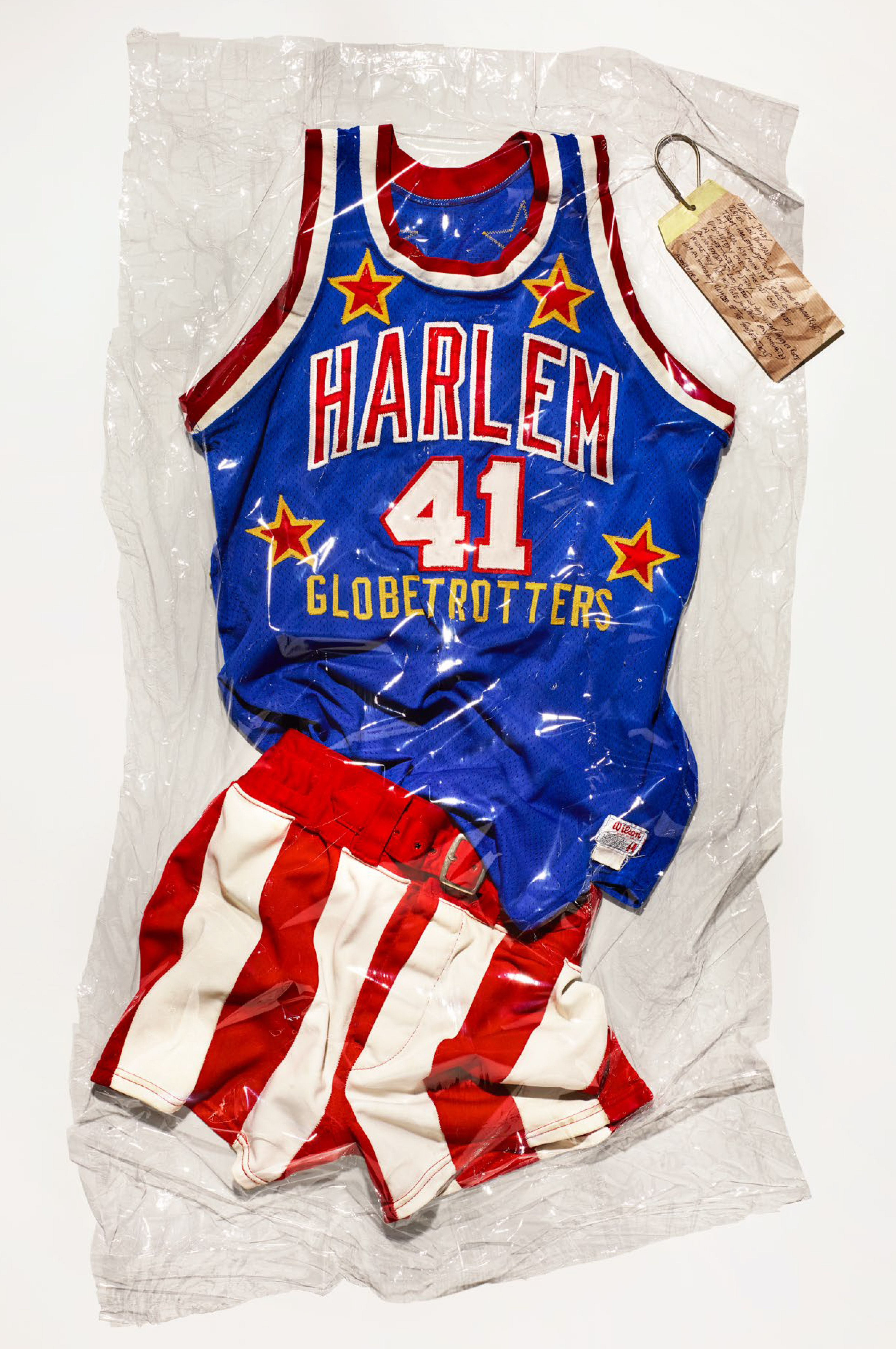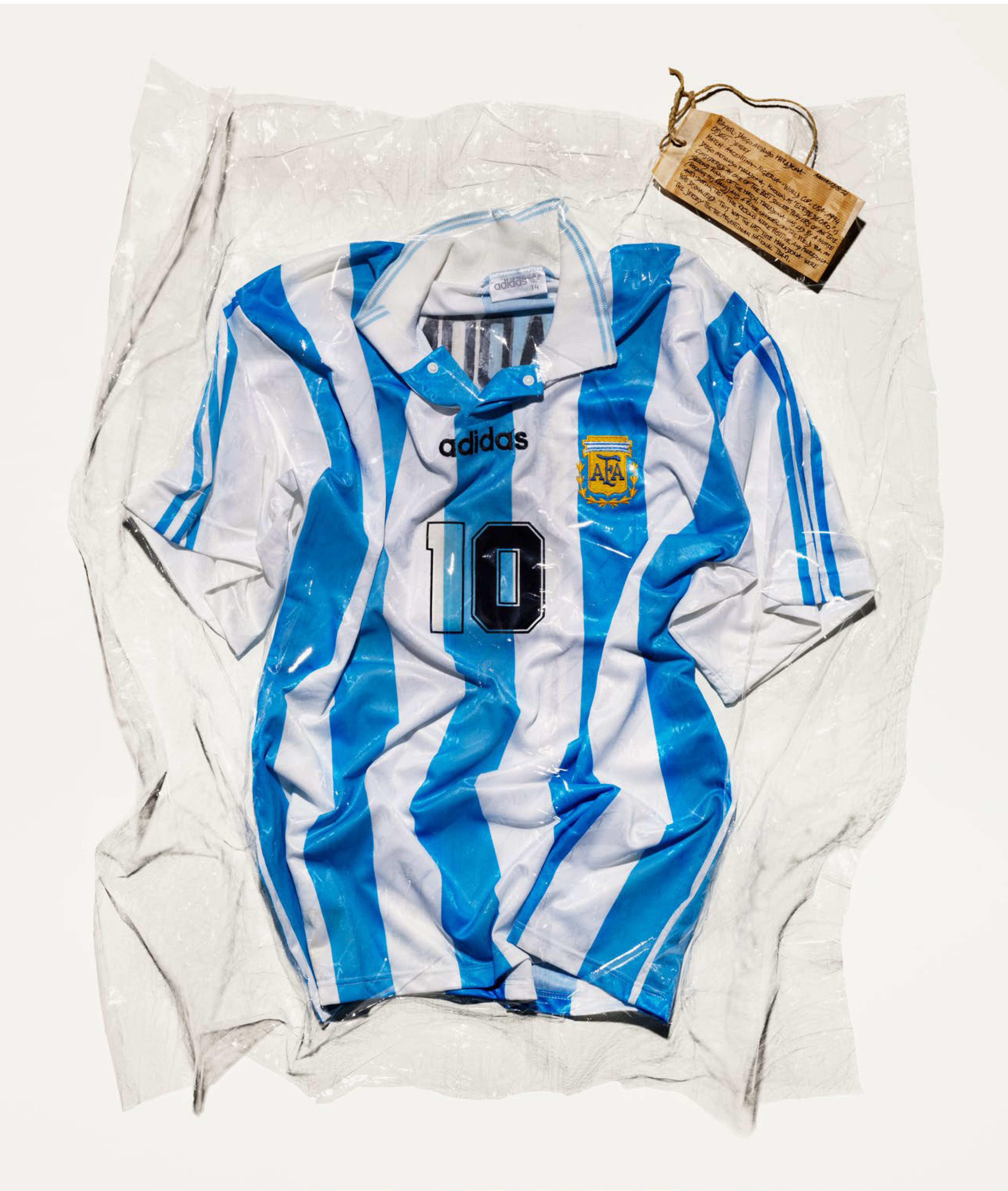VISIONQUEST 4ROSSO
Witness 1:1 di Marco Craig: una sorta di campionario oggetti, cimeli, per nulla feticista, che tendente alla valorizzazione simbolica di uno story-telling contemporaneo, ci accompagna nel cuore di eventi sportivi storici e dei lori protagonisti. E’ il caso della bicicletta Colnago Nuovo Mexico con la quale Giuseppe Saronni scrive una pagina di storia del ciclismo italiano e internazionale. 5 settembre 1982: Saronni, mani basse sul manubrio e pedalata potente, si impone ai campionati del mondo in Gran Bretagna con quella che passa alla storia come “la fucilata di Goodwood”, forse la volata più spettacolare degli annali delle due ruote.
Altro oggetto di culto è il casco indossato da Giacomo Agostini nelle gare del Gran Premio di Brno in Cecoslovacchia. 20 luglio 1969: Neil Armstrong, astronauta dell’Apollo 11, mette il primo piede sul suolo lunare e Agostini, protagonista di pagine epiche, conquista due titoli del mondo nelle classi “350” e “500” con le MV Agusta, quell’anno “Ago” vince tutte le gare e a oggi è il pilota più titolato che il motociclismo abbia mai conosciuto.
Il passamontagna bianco che disegna la sagoma di un cuore conserva a futura memoria l’impresa condotta da Reinhold Messner. Lo indossa l’8 maggio 1978, quando con Peter Habeler, raggiunge la vetta del Monte Everest, senza bombole di ossigeno. I due si impongono alla fama planetaria, perché compiono un’impresa fino ad allora ritenuta impossibile.
Le fotografie di Craig sono il risultato di una meticolosa indagine che seleziona un elenco di eventi sportivi storici e che mette al centro di ogni immagine gli oggetti e gli indumenti immortali e iconici utilizzati dagli atleti trasfigurandone la loro apparente natura di Still Life a quella di veri e propri ritratti di oguno dei protagonisti. Inseriti sottovuoto e accompagnati da un’etichetta che racconta la peculiarità dell’evento vissuto, sono stampati in scala 1:1 in una logica di corrispondenza con l’oggetto ripreso.
Witness 1: 1 by Marco Craig is a collection of objects, memorabilia, not at all fetish, gravitating towards to the symbolic enhancement of a contemporary story-telling, and accompaning us in the heart of historical sporting events. It is the case of the Colnago Nuovo Mexico bicycle with which Giuseppe Saronni writes a page in the history of Italian and international cycling. It is September 5, 1982 and Saronni, hands down on the handlebars and with a powerful pedal stroke, wins the world championships in Great Britain with what goes down in history as "the Goodwood shot", perhaps the most spectacular sprint in the annals of two wheels.
Another cult object is the helmet worn by Giacomo Agostini, motorcycling champion, in the races of the Brno Grand Prix in Czechoslovakia. It was July 20, 1969: Neil Armstrong, Apollo 11 astronaut, set foot on the moon and Agostini, won two world titles in the "350" and "500" classes with the MV Agusta. This victory, as well as the moon landing, is a historical fact: that year "Ago" wins all the races and to date is the most titled rider that motorcycling has ever known.
The white balaclava that shaped like a heart, preserves the exceptional nature of the enterprise led by Reinhold Messner for future memory. The Italian mountaineer and climber wore it when on 8 May 1978, with his partner Peter Habeler, he reached the summit of Mount Everest without oxygen.
Craig's photographs are the result of a meticulous investigation that selects a list of historic sporting events and puts the immortal, iconic objects and clothing used by athletes at the center of each image and transforms them from their apparent Sill Life nature into portraits. Inserted in vacuum bags and accompanied by a label that tells the peculiarity of the event experienced, they are all printed in 1: 1 scale in a logic of correspondence with the object taken.
